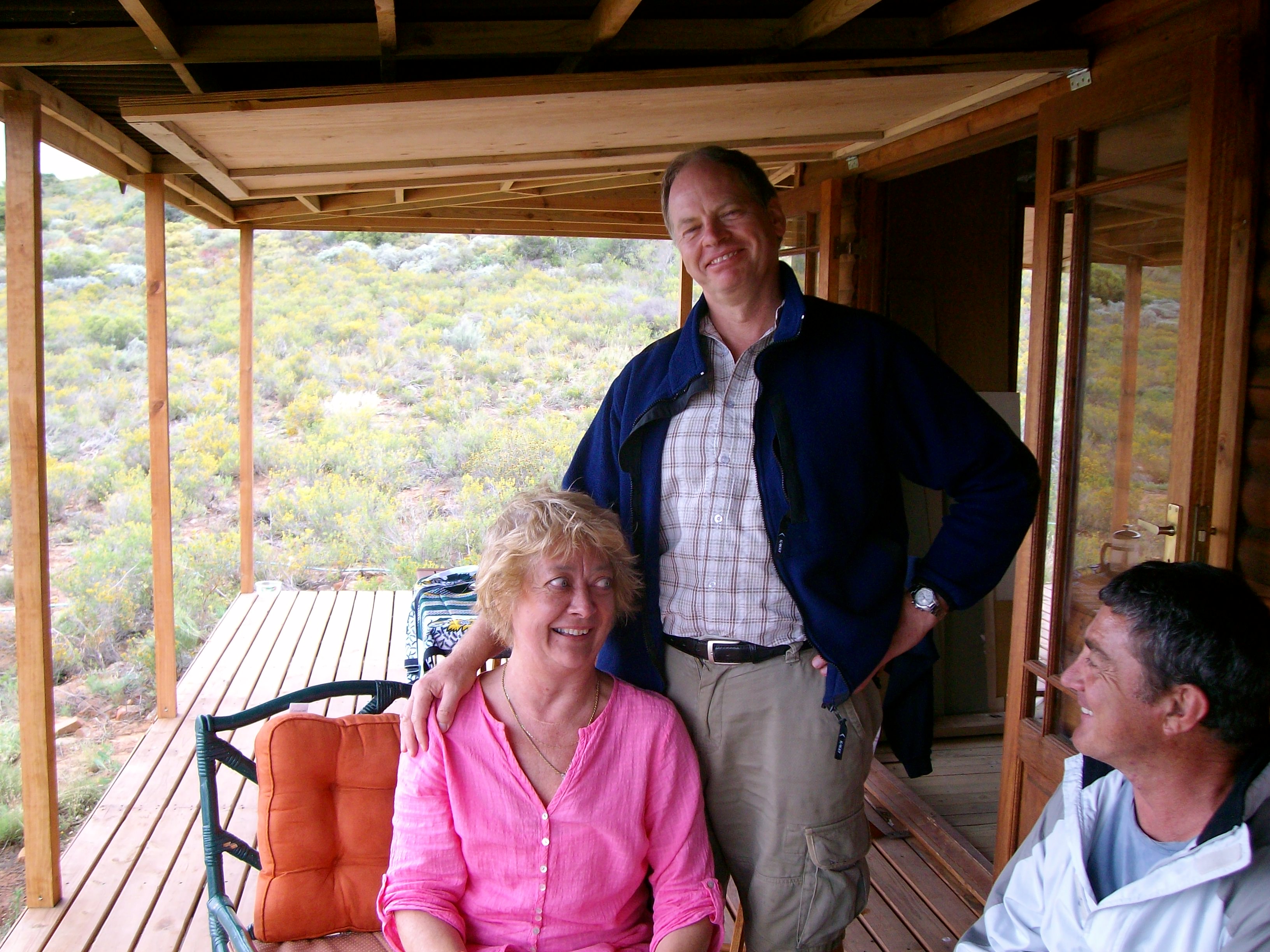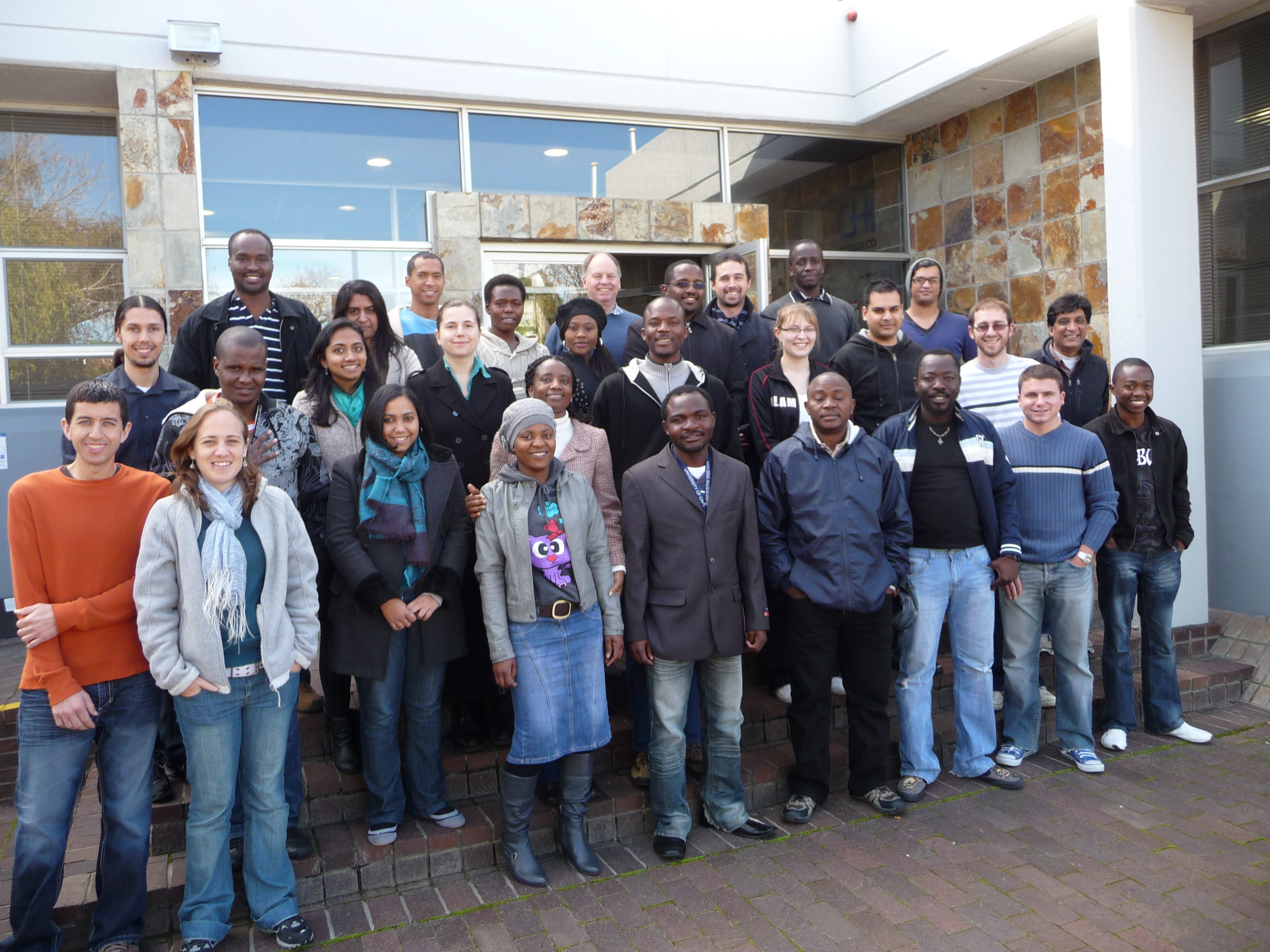Trevor Sewell, Professor of Medical Biochemistry and Director of the Electron Microscope Unit at the University of Cape Town, is South Africa’s most devoted biophysicist. “I would like to see the establishment of an entity in Cape Town, South Africa, which had the capacity to tackle problems in structural biology that are important both for their relevance to Africa and their importance to science,” Sewell says. While other South African scientists emigrate with the promise of funding and fully stocked labs, Sewell’s choice to stay and effect change in his homeland shows a willingness to effect change in post-apartheid South African science research and development. “The absence of a critical mass in the local community means that most of the things that structural biologists and other biophysicists regard as self-evident have to be justified,” Sewell says.
Since he himself was a student, Sewell has worked tirelessly at demonstrating his work to be beneficial to the greater South African population. The son of a Chief Executive of a British oil company’s South African branch, Sewell’s interest in science began as he watched his father interact with the world around him. “He was a fundamentally curious man who liked to understand how things worked,” Sewell says. Many of the Sewell family’s friends were farmers, whose lives revolved around biology. Growing up in this environment made a scientific career a natural choice for Sewell, and he was encouraged not only by his parents but also by Chris Ballenden, Sewell’s math teacher at St. David’s Marist College, a Roman Catholic boys’ school in the northern Johannesburg suburbs. “He showed me how science and mathematics were a part of everything and aroused in me the passion that is necessary to try and understand the natural world,” Sewell says. The interest played out at the University of the Witwatersrand in Johannesburg, where Sewell worked with Frank Nabarro, a physicist looking to apply his well-known laws to biologically relevant crystalline objects. “I decided that I would like to make my contribution by combining X-ray diffraction … with the study of biological material,” says Sewell. He went on to conduct PhD research on the structure of enzymes in the lab of Sir Tom Blundell, now Director of Research and Professor of Biochemistry at the University of Cambridge.
My work is almost all about visualization: visualization at an atomic scale or extrapolation from cryo-EM resolutions to the atomic scale. I believe that seeing is believing, and biophysics lets me see.
-Sewell
Sewell’s ability to make material connections between his surroundings and his studies matured when as an associate professor at the University of Cape Town he joined colleagues in the Biochemistry and Microbiology Departments, in a project on nitrilases, enzymes that convert toxic nitriles to harmless carboxylic acids. “They were studying microbes and enzymes that might be useful to the mining industry,” says Sewell. “I visualized nitrilases that my colleagues had prepared by negative staining electron microscopy and thought that they may be short spirals. It was not until some years later that a brilliant student, Mark Berman, elected to work with me and we started to make real progress with their structures.” Today, Sewell continues studying nitrilases’ structures, which still fascinate him. “The problem is interesting in many ways,” he says. “Little is understood about the mechanism of these enzymes.” Neither his methods nor his gift with students go unrecognized. “Trevor has been at the forefront, and largely instrumental, in virtually all advances in electron microscope and protein crystallographic infrastructure, capability, training, and mentoring in South Africa since he became director of the Electron Microscope Unit and facilities at UCT in 1992,” says Sewell’s colleague Wolf-Dieter Schubert, Professor of Structural Biology at the University of the Western Cape (UWC). “His perceptive and bold vision is matched by his unique hands-on abilities, down to the bench level. Indeed, he has been involved boots-and-all in the resolution of virtually every molecular structure emanating from the African continent by EM or X-ray crystallography.”
Sewell’s focus lies not only in methods, however. “The key problem at present is finding money to create jobs for graduates so that they remain in South Africa and the discipline grows,” Sewell says. “This may sound like a universal problem, but the small number of people involved often means that a single person determines whether the discipline exists in the country or not.” To help induce South African biophysics graduates to remain in South Africa and put their considerable talents to use in their home country, Sewell is working to build more attractive opportunities in South Africa. He initiated a successful Masters program in Structural Biology across three South African universities, an effort Blundell calls ambitious. “The Masters course has been superbly organized with very challenging lectures and projects,” Blundell says. Sewell attributes the success of the program in large part from the cooperation he’s received from the international biophysics community. “The establishment and growth of biophysics in South Africa has required extraordinary input from overseas colleagues and will continue to require nurturing by people from the developed world for many years,” Sewell says. Edward Egelman, Professor of Biochemistry & Molecular Genetics at the University of Virginia, served as one of the program’s international mentors. “I visited Cape Town five times as part of this program, and have been immensely impressed with all that Trevor has done to promote biophysics and structural biology in South Africa,” Egelman says. “In fact, everything that I have seen Trevor organize has turned out to be remarkable.”
Sewell has also worked to combat South Africa’s lack of resources. “Resources like synchrotrons, certain classes of electron microscope and supercomputers are considerably less accessible than they are in the ‘developed’ world,” Sewell says. “The consequences of this are that the logistics of doing an experiment are daunting.” To help make planning and executing an experiment more palatable, Sewell raised funds to import the country’s first cryo-electron microscope from Europe, and maintains its level of operation at an internationally competitive edge. He also spearheaded the effort to earn $1 million in grant funding for X-ray crystallography facilities, now located at UWC. Between the Masters program and the resources he helped put in place, Sewell actively makes sure South African scientists are aware of the opportunities now available to them right at home. “He recruits students from both within South Africa and from Africa more generally, touring the country giving lectures to prospective students,” says Blundell. “Trevor has a strong sense of social responsibility. He has recruited a good mix of white and black students from both South Africa and other African countries. He has a great talent for interacting with students at a personal level.”
South Africa’s sole Biophysical Society (BPS) member had his first brush with the organization at a small, localized thematic meeting, several of which BPS now hosts every year. “I think these meetings, now that they are being held throughout the world, are valuable for drawing people into the community,” Sewell says. “My community is primarily 3-D EM. This community is strongly represented in the BPS. The BPS also has many other communities equally strongly represented and attendance at the Society’s meetings puts everything in proportion.”
Though the effects of apartheid are still keenly felt among the South African scientific community, Sewell is working to overcome the lingering adversity of its aftermath. “The University of Cape Town is an exciting and challenging work environment,” he says. “I am currently trying both to provide a world-class electron microscopy service and do research and teaching in structural biology, with an emphasis on medically relevant problems.” One thing is for certain: Sewell’s career is thriving, and because of his efforts, the South African biophysics community will soon be thriving, too.